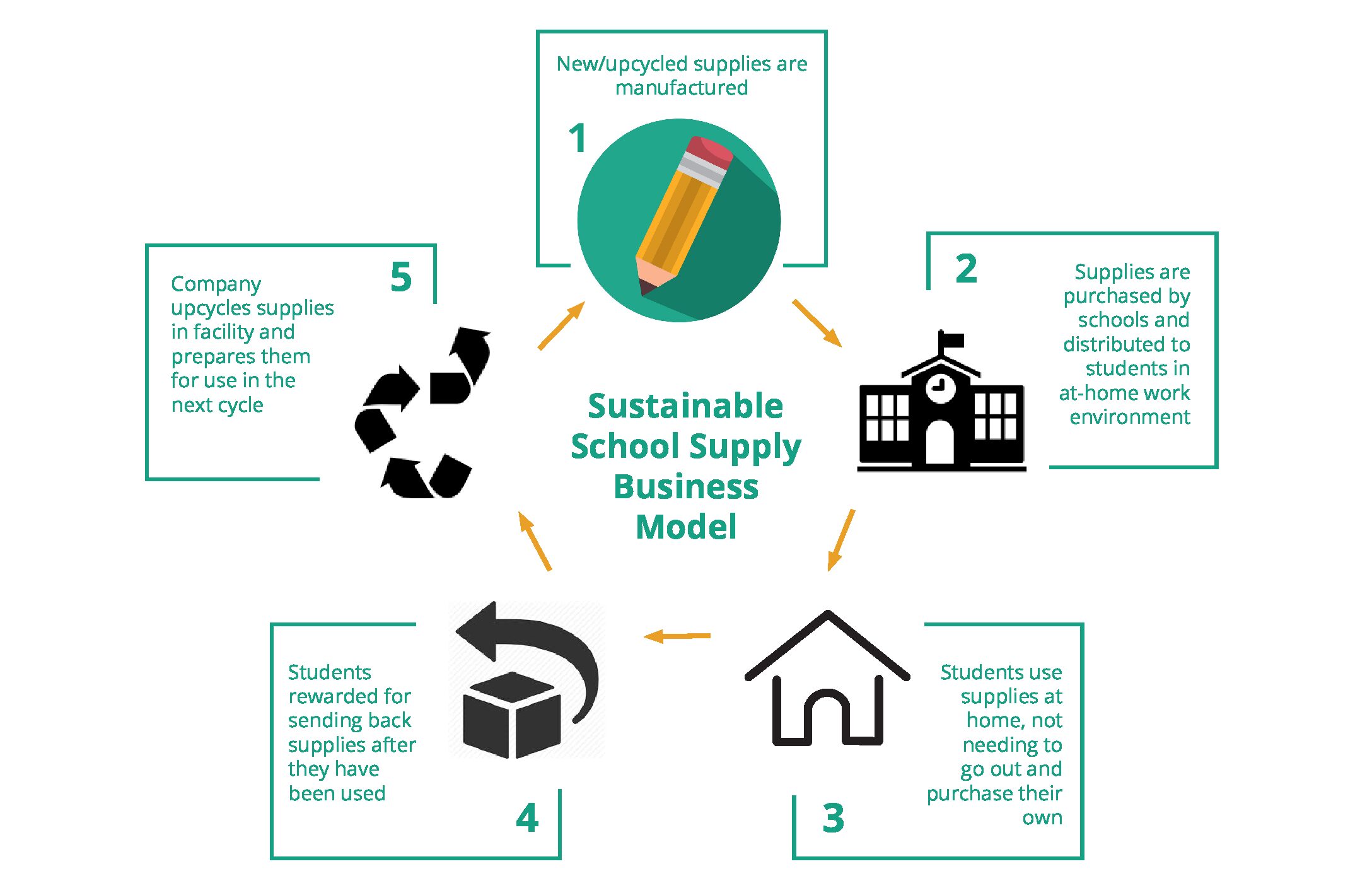An aspect of remote learning that might set children in different financial situations apart from one another is access (or lack there of) to school-related resources. Every home is equipped with different materials that children can use for learning and every family has a different capacity to go out and purchase materials they don’t already have. Even pre-pandemic when in-person learning was still safe, teachers were responsible for supplying their own classroom materials, making some classrooms superior than others in terms of access to resources.
The School Supply Sharing System is an attempt to facilitate group sharing of school supplies amongst students so that everyone has equal opportunity for success. It also was inspired by the Cradle-to-Cradle sustainability model, in which materials flow through a constant cycle and waste is minimized. The business model not only benefits the students who will receive the exact same resources to set them up for success, but it also provides an eco-efficient solution to school supply waste.
The process is cyclical. First, sustainable products are designed and manufactured by the company. Then, supplies are purchased by school districts and distributed to their students in their at-home learning environments. Students use the supplies at home, without needing to go out and buy their own supplies. Some kind of reward system is used to motivate students to return supplies to the company after they have been used. Then, the company up-cycles the supplies and they are prepared for use in the next cycle.
The supplies will need to be affordable and designed to be taken apart and put back together again for up-cycling to occur.




